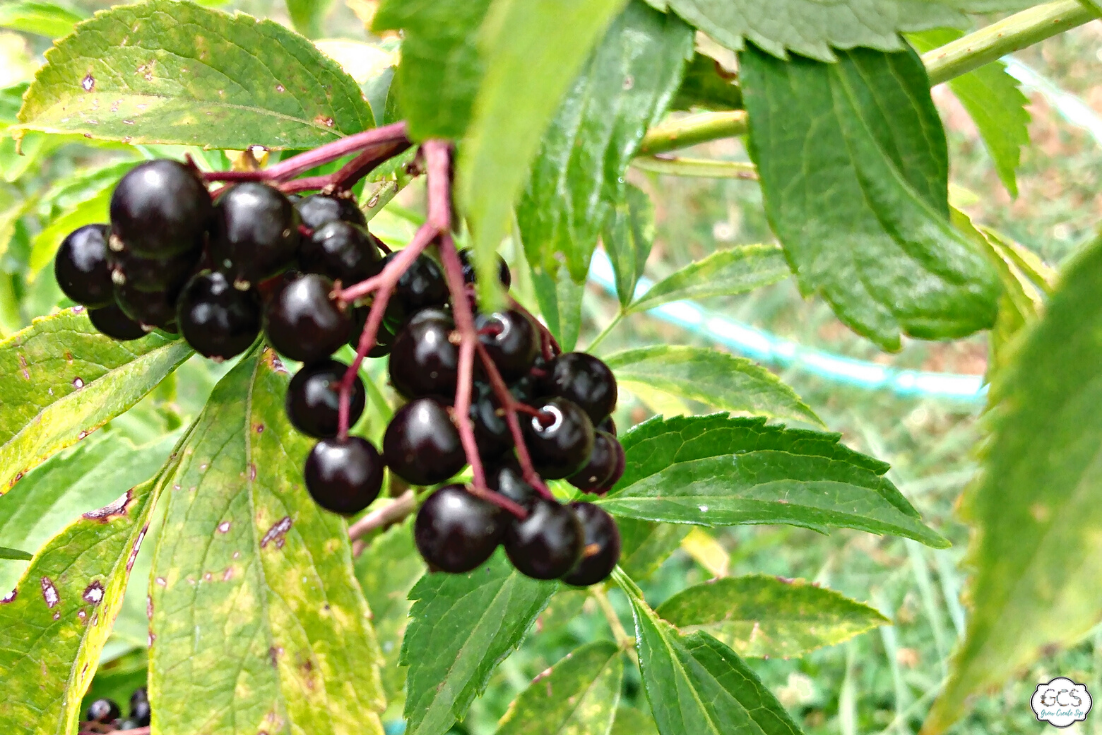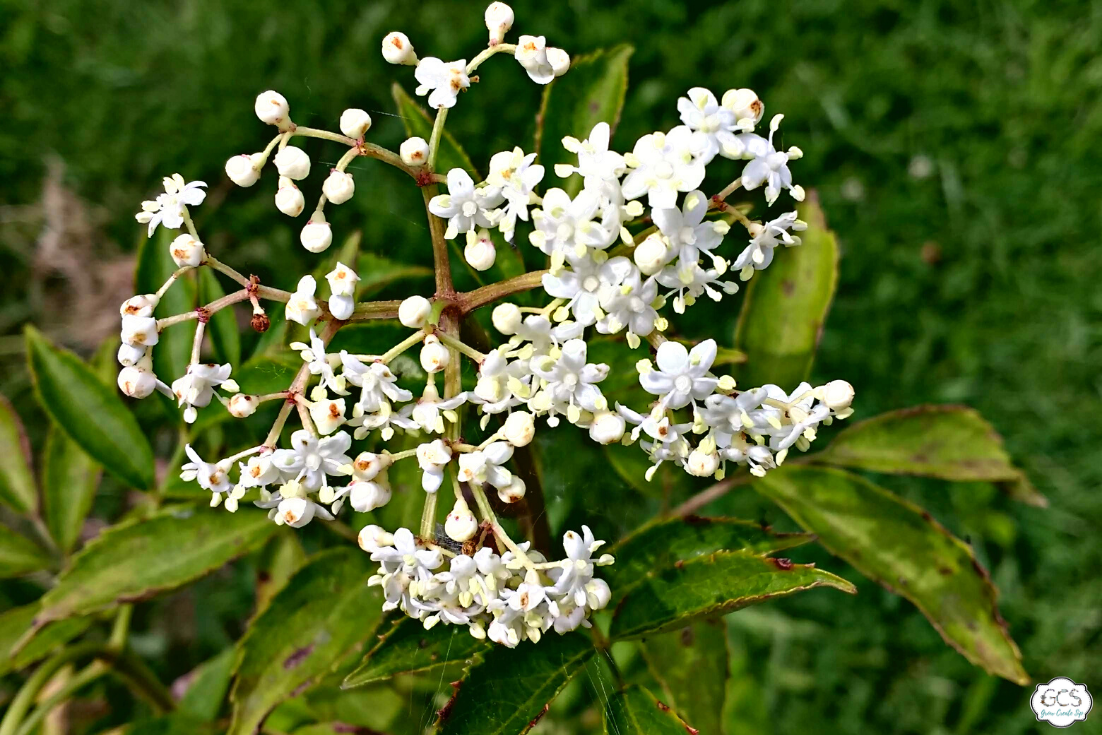How to Plant and Propagate Elderberry Bushes
Mar 22, 2022
Elderberries come in two varieties: American (Sambucus canadensis) and European black elderberry (Sambucus nigra). The American elderberry is smaller and grows to be 6 to 10 feet tall. The European elderberry can grow up to 10 feet tall.
The Sambucus elderberry grown in the United States produces larger, sweeter berries than those grown in Europe.
The Best Species for Syrups
Before we talk about elderberry syrup, it's important to note that when eaten raw, the stems and leaves of the elderberry bush are poisonous. They contain cyanide, which can make us sick. Thankfully, the berries lose their toxicity when cooked.
The best species for making medicines and syrups are probably Sambucus nigra, though their canadensis cousins are almost identical. Blue elderberries, like sambucus cerulea, are also very tasty and are more common in western parts of North America.

Elderberry Planting Guide
Elderberry bushes can grow to be tree-like in appearance, but regular pruning will keep them compact. With their white blossoms (which are tasty on their own) and dark purple and purple-black berries, they're a lovely plant to have in your yard, and not only for their health benefits.
Note: Red elderberries are toxic and should not be cultivated for berry harvesting.
Soil Needs
Elderberry doesn't grow so well in sandy soil, as there are fewer nutrients and they're less able to hold on to their moisture. That being said, they also can't tolerate repeated flooding or over-watering. During the spring and summer growing seasons, standing water stunts the roots and exposes them to fungal infections.
Our aim is to keep the soil moist, but not soggy. We can add water ourselves if there has been less than an inch of rain that week.
A two- to three-inch covering of compost or woodchips applied over the root zones of plants will help to conserve soil moisture and increase organic matter in the soil. Fertilizer does not need to be applied in the first year after planting.
Fertilizing
Fertilize plants once a year, in the early spring, just before they emerge from their hibernation. Bring the manure and mulch all the way to the plant's drip line (from the base of the plant to the end of the branches). We should extend this area each spring to keep up with the plant's growth.
If the plants don't seem to be growing well, they may need a little more nitrogen. If the plants seem like they need more nutrition, we can add a bit of organic fish emulsion fertilizer during watering.
Planting Requirements
If we properly establish your elderberry bush and place it in the right soil, it will thrive for years. Elderberries can thrive in a variety of soil types, although they are not drought resistant. They also prefer a pH range of 5.5 to 6.5.
When planting, check to see if the soil is moist, drains properly, and is fertile. Plant in a location where they will have plenty of room to develop. If you don't have a lot of space, don't panic; pruning will keep them smaller.
Elderberry Planting Tips
Elderberries are really easy to grow, as long as they're planted in the right way. Let's look at how to plant a new bush (or transplant an established propagation).
- When digging the hole, we want to keep it slightly wider than the roots, as well as about 2 inches deeper than the plant's root depth.
- Fill the planting hole with compost and work it in.
Backfill with dirt, spreading the roots out inside the hole and tamping the ground with your foot to assist fill in any empty pockets of air. - Water well!
- Add more compost around the plant, then a layer of mulch. Mulch helps keep weeds at bay as well as preserve moisture in the roots.
- Elderberries should be planted 6 to 8 feet apart, and rows should be 10 feet apart.
Although elderberries are technically self-pollinating, bred kinds don't seem to do well without another type nearby. If we want better fruit production and size, it's best to plant at least two different kinds of elderberry together, for maximum cross-pollination.

Best Areas for Growth
Elderberries prefer full sun to partial shade (full sun produces more yield per plant). Consider growing your elderberry shrub in moderate shade with early morning and afternoon sun in warmer areas. We recommend full sun in more northern or chilly climates.
To increase the passage of air and avoid difficulties with birds, insects, and illness, elderberries planted for fruit should be placed away from woodlands. We can also use elderberries as a ground cover to help prevent erosion along creek and stream banks.
Root rot is a problem for elderberry shrubs. Make sure your soil drains adequately and isn't in a low, water-retaining low spot in your yard.
Pruning
After two years, we should trim elderberries. With the exception of damaged or dead branches, do not prune during the first two years of growth. Once they've reached the get of three, we can start pruning. We should do this in late winter or early spring (before the buds break).
To reduce disease transmission, we should always sterilize our pruning shears and loppers with an alcohol spray. Other than that, pruning is pretty easy!
- Remove any damaged or dead canes first (scrape the bark with your fingernail to see if it's green beneath; if it's not, it's dead).
- Remove three-year-old canes using loppers or pruning shears. They're less robust and produce fewer fruits.
- On 1 to 2-year-old canes that are too long to sustain berries, make a heading cut by cutting diagonally back to a healthy bud.
- We should aim to leave 6 canes per bush when pruning, ideally a mix of 1 to 2-year-old canes.
If we follow all the above steps, particularly focusing on the soil and watering needs of elderberries, we should be able to keep our plants happy and thriving for years to come.

How to Propagate Elderberry From an Established Plant
Elderberry bushes are easy to propagate from cuttings, and you can often simply take some sections off a growing tree and plant them in the ground.
When the plant is dormant (late fall to early spring), it's the best time to propagate from it.
- Cut a branch from an elder bush and divide it into six-inch segments making sure each segment has a node on it. (A node is an area on the stem where the buds are located)
- Remove the leaves and place them in a pot of sand mixed with peat moss or potting soil, keeping the node intact. Soaking the cuttings in a natural willow bark rooting hormone can help, but it's not strictly necessary.
- Maintain a moist environment in the pot by putting it in direct sunshine. We should see root growth in a few months. At this point, we can remove the cuttings and plant them out, ideally in the spring.
Note: A mature plant's suckers can also be dug up and replanted elsewhere.
Where to Get Plants From
We love shopping with Strictly Medicinal Seeds, as well as the Starkbros. If you don't have a friend or family member to get a cutting from, then buying an already established elderberry plant is the next best bet. Finding a good place that has elderberry plants for sale is going to be a lifesaver!
We can't recommend these guys enough. With plenty of variety and affordable price tags, we know we're getting something solid that's going to last for years to come. Especially because, if looked after well, an elderberry bush can live for up to 60 years!
Starkbros even have a handy hardiness zone, which will tell you whether a tree or plant is compatible with your area. There's nothing worse than bringing home a new plant and watching it wither in your garden.
Thriving Gardens for Home Remedies
Growing plants that not only look beautiful but have real-world applications is incredibly rewarding. Not only are elderberry bushes gorgeous plants, but they have so many uses outside of the garden.
Gardening is even more fun with friends! If you would like to join a growing budding group of gardeners excited about preservation and medicinal plants make sure to check out The Herbal Studio & Communi-tea!
I'd love to know though, are you going to try propagating your own elderberry? Let me know in the comments below.
















